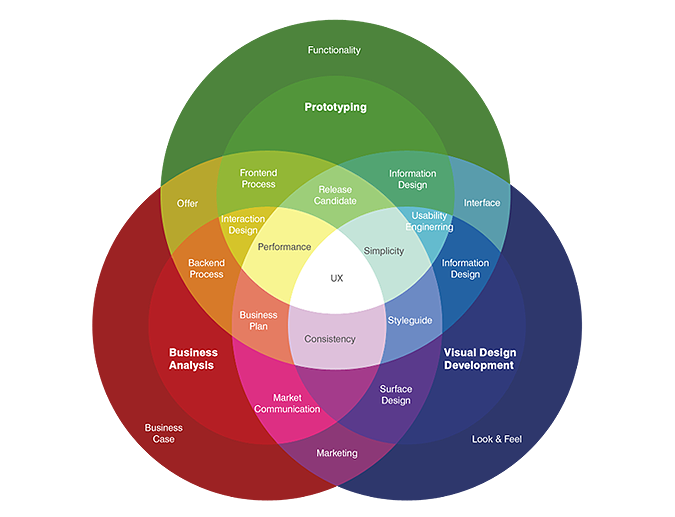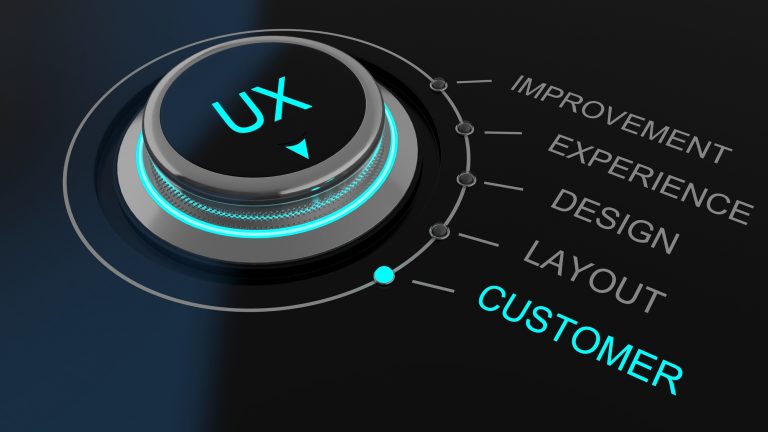|
June 2018
Review
AutomatedBuildings.com
|
[an error occurred while processing this directive]
(Click
Message to Learn More)
|
| Building an Awesome UX |
Ken Sinclair
Founder, Owner, Publisher AutomatedBuildings.com
|
UX is User Experience and refers to a person's emotions and attitudes about
using a service. Whether you view Building as a noun or a verb, we as an industry need to create Awesome User Experiences.
As an old guy who's been writing about building automation for over 20
years, I see from history that change is very slow.
Before
automatedbuildings.com I was working as an energy/automation consultant renaming Energy
Management Control Systems EMCS to Client Comfort Systems,
CCS, the start of Humanistic Digital Inclusion and
the acknowledgment of the client as the User. During this project, I
learned the power of HTML and Internet as a valuable part of any UX.
The CCS Manual is still online today proving the longevity of an online user interface and the virtual
world.
In 1999 we started AutomatedBuildings.com, during the dot-com days, we wrote,
We have selected this article to be in our first launch issue because
we think it sends us all a wake-up call as to how significant the
internet is going to be in the future. The concept of a large
building as an internet identity with its own web address is now the
latest step in presenting and managing your Automated Buildings.
What has changed in 20 years of Internet? Cost is
down; speed is up, everything has an IP address, the internet has
become clouded with powerful microcomputers on the edge self-learning and sharing their intelligence with everyone who is
continuously connected.
This column talks about using the tools of the day to build and
deliver an Awesome UX. Why are we all involved in that process?;
because we are all
involved in the process of providing the total user experience "UX" for
our buildings.

This includes Creating empathic people-centric buildings and all the other concepts outline in my many ramblings.
Putting yourself in someone else’s shoes and seeing things from their
perspective is called empathy, and we could do a lot more of it.
Let's all get involved delivering today's Awesome UX.
Our users ( the people of our buildings ) want out of the box and they want to connect and interact and be part of the buildings user experience.
and they want to connect and interact and be part of the buildings user experience.
In this video from last years' Realcomm IBcon event in San Diego, I
call for a change in how we view the building automation industry. "Uberization" of comfort
This article helps with how we will change - Cope with the IOT Revolution by Staying Agile
As the smart
building industry rapidly evolves, management strategies pioneered by
software developers can help us successfully adapt.
5 Awesome UX Design Trends for 2018
WANT TO DESIGN THE BEST POSSIBLE APPS IN 2018? OUR BREAKDOWN OF THE
LATEST UX DESIGN TRENDS WILL HELP YOU TO STAY ON THE CUTTING EDGE OF
DESIGN.

Our smart building automation industry needs to follow the auto
industry in reinventing ourselves to look and think like the
self-learning software companies we are morphing into. Who will become
the new Building Data Architects and the virtual building software
companies of our future?
We have much to learn from the rapidly evolving self-driving autonomous cars
and how can we make our smart buildings more self-driving and improve
our client/customer experience with continuous connection starting at
the edge and moving the bits of intelligence, intelligently.
UX is a Life Force, Not a Layer - read this and substitute the word building for the car.
One
of the defining characteristics of Concept-愛i is the introduction of an
AI assistant. In this case, the assistant’s name is “Yui.” Designing
Yui was a challenge because we felt from the beginning that she should
be an integral part of the car and not a separate software system. AI
can sometimes be developed as something like an agent — a disembodied
3rd party that guides and assists in actions related to the car. It
feels like a separate entity. But there is so much opportunity to build a
user experience that is truly integrated. Where does this ambiguous,
intelligent system that can drive your car live? Does it move? How do
you communicate with it? Does it have a personality? What does it
control? Ultimately the question became — can it just be the car?
As an industry, we are still struggling with UI User interface, and
then we are designing as if the user is the building owner,
operators, and more recently the designers, of course, none are the
user. As we leave our past strong connection to brick and mortar and
transition to the bits and bytes, let’s not forget the flesh and bones
of our building users. Our reason for reason.
This book provides insight into our task Designing Connected Products: UX for the consumer internet of things
Networked
thermostats, fitness monitors, and door locks show that IoT devices can
(and will) provide abundant ways for people to interact with the world
around them. But designing connected products for consumers is a
challenge that involves issues beyond UI and interaction design.
This book
provides experienced UX designers and technologists with a clear and
practical roadmap for approaching consumer product strategy and design
in this novel market. By drawing on the best of current design practice
and academic research, Designing Connected Products delivers sound
advice for working with cross-device interactions and complex
ecosystems inherent in IoT technology.
This is said about the book
“In a field where the hype can change even faster than the technology,
this book grounds designers, entrepreneurs, and technologists in what
matters—the fundamentals of people’s behavior, networked technologies,
and the context both now find themselves in. In doing this, it reaches
back to a larger historical field of research, design, and evaluation
that is invaluable.
“As a grizzled veteran of several campaigns within the matter-battle of
the Internet of Things, I was pleasantly surprised to find the number
of times this book made me pause, think, and rethink my own work (and
that of others). A very valuable addition to the canon of design
thinking in this emerging area.
“This book pretends to be a primer on designing the Internet of Things
(and it’s an excellent one) but it reveals itself quickly as really
being a primer on nearly every aspect of contemporary design—as the
Internet touches nearly every aspect of it.”
Matt Jones - Interaction Design Director, Google Creative Lab, and former Principal at BERG
This website provides some more definitions The Difference Between UX and UI Design - A Layman’s Guide and Contains some great quotes,
As Rahul Varshney, Co-creator of Foster.fm puts it:
User
Experience (UX) and User Interface (UI) are some of the most confused
and misused terms in our field. A UI without UX is like a painter
slapping paint onto canvas without thought; while UX without UI is like
the frame of a sculpture with no paper mache on it. A great product
experience starts with UX followed by UI. Both are essential for the
product’s success.
Helga Moreno, who her article The Gap Between UX And UI Design put it quite eloquently:
“Something that looks great but is difficult to use is exemplary of
great UI and poor UX. While Something very usable that looks terrible
is exemplary of great UX and poor UI.”
Plus our UX needs to be Digitally Mindful
@digitalmindful Humanizing digital transformation digitalmindfulness.net Digital Mindfulness is a platform for individuals and companies to
develop next-generation approaches to a digital transformation that
elegantly blend digital approaches with unique human needs and qualities
More definition from this article Transcendental Coalescence: In the Age of IoT and Analytics
Before we start deliberating on this topic lets first qualify some definitions:
Transcendental:
As per Oxford dictionary, mathematically it is something that is not
capable of being produced by the mathematical operations; in
philosophical terms, it is something beyond the physical realm
Coalescence: Coalescence as a process of “joining or merging of elements to form one mass or whole.”
Transcendental Coalescence: Is
more than mashing-up of technologies and use cases owned by separate
business/industry verticals. It is the fusion of people, processes, and
technology to provide most intuitive and optimized business outcome.
This June article, Smart Buildings Start with the People
In an era where people are accustomed to accessing timely information
at their fingertips, corporations need to respond with an equally fast
and reliable level of service and visibility to resources within their
buildings.
Productivity
is an elusive and complex study, as is the happiness of an individual.
Harvard University has spearheaded the “The Health and Human
Performance Index” (HaPI) to gain a better understanding of human
productivity. To assess overall performance, the Index specifies a
measurement of “Built Environment” influences in addition to more
traditional measurements such as Well-being, Productivity, Engagement,
and Culture. Relevant to the discussion on employee satisfaction,
Built Environment elements defined by HaPI are:
“Quality
of space (a type of workspace, thermal comfort, air quality) and access
to healthy amenities or opportunities (adjustable desks, fitness
centers, shower facilities, healthy food options, views to outdoors and
the ability to work at home).”
These HaPI
productivity measures have a strong correlation to major trends in the
workplace, such as mobile workforce support, hot desking,
occupant-based heating, lighting, and services.
[an error occurred while processing this directive]
Is Industry responding? Yes.
The hard companies that have mindlessly dominated the leases of
our buildings are being replaced with mindfulness, empathic/humanistic
softer companies that understand the true value of their people and
their User Experience. An industry pioneer exploring UX
with a product call Comfy has a new post, Let me share her new title
and passion as an example of the change,
Lindsay Baker Head of Sustainability & Wellbeing at WeWork
And her passion, Catalyzing at the cutting edge of healthy and
sustainable buildings and communities. From research to non-profit
work, from startups to corporates, I work wherever I can have a large
scale impact. Carrying a special torch for human-centered building
operations and design.
Hoping to engage thought on Creating an Awesome UX in this discussion at
https://nordicsmartbuilding.fi/program/ in a few days in Helsinki.
09:20 – 10:00 | DISCUSSION: “Empathic, Healing & Anticipatory Buildings”
– The physical and psychological implications of smart buildings
– Anticipating users’ needs for friction-free UX
We all need to learn more about providing a Transcendental,
Mindful, HaPI, Life Force, UX. We need to think more like software designers, catching the vibe of our building to agilely
create our awesome UX.
Just tweeted this just online interview,
with Control Trends. A great chat on Humanistic Digital Inclusion and
how that might lead to Building an Awesome UX give it a listen.
footer
[an error occurred while processing this directive]
[Click Banner To Learn More]
[Home Page] [The
Automator] [About] [Subscribe
] [Contact
Us]

 and they want to connect and interact and be part of the buildings user experience.
and they want to connect and interact and be part of the buildings user experience.